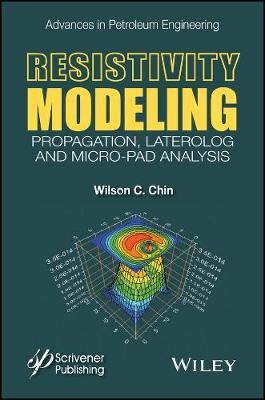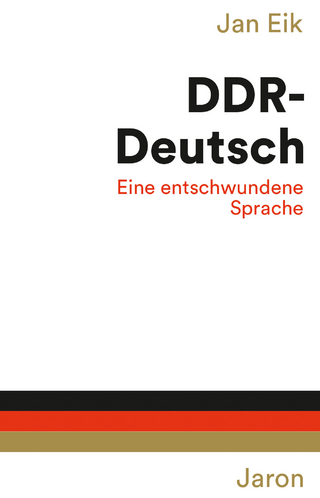
Resistivity Modeling
Wiley-Scrivener (Verlag)
978-1-118-92599-7 (ISBN)
This book develops math modeling methods for layered, anisotropic media, providing algorithms, validations and numerous examples. New electric current tracing tools are also constructed which show how well (or poorly) DC tools probe intended anisotropic formations at different dip angles. The approaches discussed provide readers with new insights into the limitations of conventional tools and methods, and offer practical and rigorous solutions to several classes of problems explored in the book.
Traditionally, Archie's law is used to relate resistivity to water saturation, but only on small core-sample spatial scales. The second half of this book introduces methods to calculate field-wide water saturations using modern Darcy flow approaches, and then, via Archie's law, develops field-wide resistivity distributions which may vary with time. How large-scale resistivity distributions can be used in more accurate tool interpretation and reservoir characterization is considered at length. The book also develops new methods in "time lapse logging," where timewise changes to resistivity response (arising from fluid movements) can be used to predict rock and fluid flow properties.
Wilson C. Chin earned his Ph.D. from M.I.T. and his M.Sc. from Caltech. He has published fifteen books describing his original research in reservoir engineering, formation testing, managed pressure drilling, wave propagation, Measurement While Drilling (MWD) and electromagnetic well logging, over one hundred papers and three dozen patents.?Mr. Chin has consulted for well known domestic and international oil and gas corporations, and during the past two decades, won five prestigious research contracts and awards in petroleum exploration and production with the United States Department of Energy.
Preface xi
Acknowledgements xvii
1 Physics, Math and Basic Ideas 1
1.1 Background, Industry Challenges and Frustrations 1
1.2 Iterative Algorithms and Solutions 2
1.3 Direct Current Focusing from Reservoir Flow Perspective 5
1.4 General Three-Dimensional Electromagnetic Model 11
1.5 Closing Remarks 25
1.6 References 25
2 Axisymmetric Transient Models 26
2.1 Physical Ideas, Engineering Models and Numerical Approaches 27
2.2 Transient Axisymmetric Coil Source Calculations 37
2.3 Effects of Frequency, from Induction, to Propagation, to Dielectric 59
2.4 Depth of Investigation 60
2.5 Closing Remarks Related to Interpretation 61
2.6 References 63
3 Steady Axisymmetric Formulations 64
3.1 Laterolog Voltage Modeling and Interpretation Approach 65
3.2 Current Trajectories from Streamfunction Analysis 68
3.3 Voltage Calculations and Current Trajectories 71
Run 1. Conductivities σv = 1.0, σh = 1.01 74
Run 2. Conductivities σv = 1.01, σh = 1.0 76
Run 3. Conductivities σv = 1, σh = 10 78
Run 4. Conductivities σv = 10, σh = 1 80
3.4 Current and Monitor Electrodes 85
3.5 References 85
4 Direct Current Models for Micro-Pad Devices 86
4.1 Th ree-Dimensional, Anisotropic, Steady Model 87
4.2 Finite Difference Approach and Subtleties 88
4.3 Row versus Column Relaxation 88
4.4 Pads Acting on Vertical and Horizontal Wells 90
Run 1. Conductivities σv = 1.0, σh = 1.01 (vertical well) 92
Run 2. Conductivities σv = 1.01, σh = 1.0 (vertical well) 94
Run 3. Conductivities σv = 1, σh = 10 (vertical well) 96
Run 4. Conductivities σv = 10, σh = 1 (vertical well) 98
Run 5. Conductivities σv = 1.0, σh = 1.01 (horizontal well) 100
Run 6. Conductivities σv = 1.01, σh = 1.0 (horizontal well) 102
Run 7. Conductivities σv = 1, σh = 10 (horizontal well) 104
Run 8. Conductivities σv = 10, σh = 1 (horizontal well) 106
4.5 Closing Remarks 108
4.6 References 108
5 Coil Antenna Modeling for MWD Applications 109
5.1 Axisymmetric and 3D Model Validation 109
5.2 Modeling a Center-Fed Linear Dipole Transmitter Antenna 117
5.3 More Antenna Concepts 127
5.4 References 162
6 What is Resistivity? 163
6.1 Resistance in Serial and Parallel Circuits, Using Classical Algebraic Approach 163
6.2 Resistance in Serial and Parallel Circuits, Using Differential Equation Approach 165
6.3 Isotropy and Anisotropy in Cross-bedded Sands 167
6.4 Tool Measurements and Geological Models 171
6.5 References 172
7 Multiphase Flow and Transient Resistivity 173
7.1 Immiscible Buckley-Leverett Linear Flows Without Capillary Pressure 176
7.2 Molecular Diffusion in Fluid Flows 183
7.3 Immiscible Radial Flows with Capillary Pressure and Prescribed Mudcake Growth 193
7.4 Immiscible Flows with Capillary Pressure and Dynamically Coupled Mudcake Growth – Theory and Numerics 208
7.5 Immiscible Flows with Capillary Pressure and Dynamically Coupled Mudcake Growth – Detailed Examples 223
7.6 Simple Example in Time Lapse Logging 234
7.7 Resistivity Distributions Variable in Space and Time 247
7.8 References 250
8 Analytical Methods for Time Lapse Well Logging Analysis 251
8.1 Experimental Model Validation 251
8.2 Characterizing Mudcake Properties 255
8.3 Porosity, Permeability, Oil Viscosity and Pore Pressure Determination 259
8.4 Examples of Time Lapse Analysis 268
8.5 References 273
Cumulative References 274
Index 276
About the Author 282
| Erscheinungsdatum | 01.12.2016 |
|---|---|
| Reihe/Serie | Advances in Petroleum Engineering |
| Sprache | englisch |
| Maße | 155 x 226 mm |
| Gewicht | 544 g |
| Themenwelt | Geisteswissenschaften ► Geschichte |
| Technik ► Elektrotechnik / Energietechnik | |
| ISBN-10 | 1-118-92599-8 / 1118925998 |
| ISBN-13 | 978-1-118-92599-7 / 9781118925997 |
| Zustand | Neuware |
| Haben Sie eine Frage zum Produkt? |
aus dem Bereich


